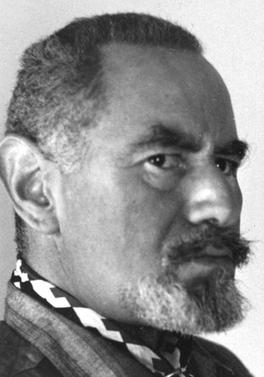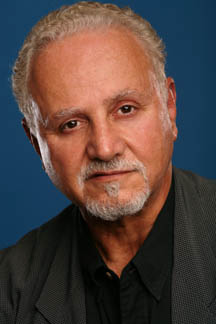
Terence Hanbury "Tim" White was an English writer. He is best known for his Arthurian novels, which were published together in 1958 as The Once and Future King. One of his best known is the first of the series, The Sword in the Stone, which was published as a stand-alone book in 1938.

Eileen Mary Challans, known by her pen name Mary Renault, was a British writer best known for her historical novels set in ancient Greece.

John Gerard Braine was an English novelist. Braine is usually listed among the angry young men, a loosely defined group of English writers who emerged on the literary scene in the 1950s.

LGBTQ themes in speculative fiction include lesbian, gay, bisexual, transgender, or queer (LGBTQ) themes in science fiction, fantasy, horror fiction and related genres.[a] Such elements may include an LGBTQ character as the protagonist or a major character, or explorations of sexuality or gender that deviate from the heteronormative.
The Uranians were a late-19th-century and early-20th-century clandestine group of up to several dozen male homosexual poets and prose writers who principally wrote on the subject of the love of adolescent boys. In a strict definition they were an English literary and cultural movement; in a broader definition there were also American Uranians. The movement reached its peak between the late 1880s and mid 1890s, but has been regarded as stretching between 1858, when William Johnson Cory's poetry collection Ionica appeared, and 1930, the year of publication of Samuel Elsworth Cottam's Cameos of Boyhood and Other Poems and of E. E. Bradford's last collection, Boyhood.

Gerald Kersh was a British and later also American writer of novels and short stories.

Edmund Valentine White III is a gay American novelist, memoirist, playwright, biographer and essayist. He is the recipient of Lambda Literary's Visionary Award, the National Book Foundation's Lifetime Achievement Award, and the PEN/Saul Bellow Award for Achievement in American Fiction. France made him Chevalier de l'Ordre des Arts et des Lettres in 1993.

Gay literature is a collective term for literature produced by or for the gay community which involves characters, plot lines, and/or themes portraying male homosexual behavior.

Michael McEachern McDowell was an American novelist and screenwriter described by author Stephen King as "the finest writer of paperback originals in America today". His best-known work is the screenplay for the Tim Burton film Beetlejuice.
Teleny, or The Reverse of the Medal is a pornographic novel, first published in London in 1893. The authorship of the work is unknown. There is a consensus that it was an ensemble effort, but it has often been attributed to Oscar Wilde. Set in fin de siècle Paris, its concerns are the magnetic attraction and passionate though ultimately tragic affair between a young Frenchman named Camille Des Grieux and the Hungarian pianist René Teleny. The novel is one of the earliest pieces of English-language pornography that focuses explicitly and near-exclusively on homosexuality. Its lush and literate, though variable, prose style and the relative complexity and depth of character and plot development share as much with the aesthetic fiction of the period as with its typical pornography.

Felice Picano is an American writer, publisher, and critic who has encouraged the development of gay literature in the United States. His work is documented in many sources.

Gay pulp fiction, or gay pulps, refers to printed works, primarily fiction, that include references to male homosexuality, specifically male gay sex, and that are cheaply produced, typically in paperback books made of wood pulp paper; lesbian pulp fiction is similar work about women. Michael Bronski, the editor of an anthology of gay pulp writing, notes in his introduction, "Gay pulp is not an exact term, and it is used somewhat loosely to refer to a variety of books that had very different origins and markets". People often use the term to refer to the "classic" gay pulps that were produced before about 1970, but it may also be used to refer to the gay erotica or pornography in paperback book or digest magazine form produced since that date.

Gay Men's Press was a publisher of books based in London, United Kingdom. Founded in 1979, the imprint was run until 2000 by its founders, then until 2006 by Millivres Prowler.
Francis Lathom was a British gothic novelist and playwright.
Gregory Woods is a British poet. He was the Chair in Gay and Lesbian Studies at Nottingham Trent University from 1998 to 2013. He is the author of five books of literary and LGBT studies criticism, and seven poetry collections.
The Sins of the Cities of the Plain; or, The Recollections of a Mary-Ann, with Short Essays on Sodomy and Tribadism, by the pseudonymous "Jack Saul", is one of the first exclusively homosexual works of pornographic literature published in English. The book was first published in 1881 by William Lazenby, who printed 250 copies. A second edition was published by Leonard Smithers in 1902. It sold for an expensive four guineas.
Valancourt Books is an independent American publishing house founded by James Jenkins and Ryan Cagle in 2005. The company specializes in "the rediscovery of rare, neglected, and out-of-print fiction," in particular gay titles, Gothic novels and horror novels from the 18th century to the 1980s.

Michael Harrington Nelson (1921–1990) was a British novelist best known for his 1958 gay novel A Room in Chelsea Square, originally published anonymously.
Bisexual literature is a subgenre of LGBTQ literature that includes literary works and authors that address the topic of bisexuality or biromanticism. This includes characters, plot lines, and/or themes portraying bisexual behavior in both men and women.

John Peyton Cooke is an American novelist. He is most notable as a short story writer known for thrillers, often with gay male protagonists and including themes of male homosexuality and psychological suspense.













